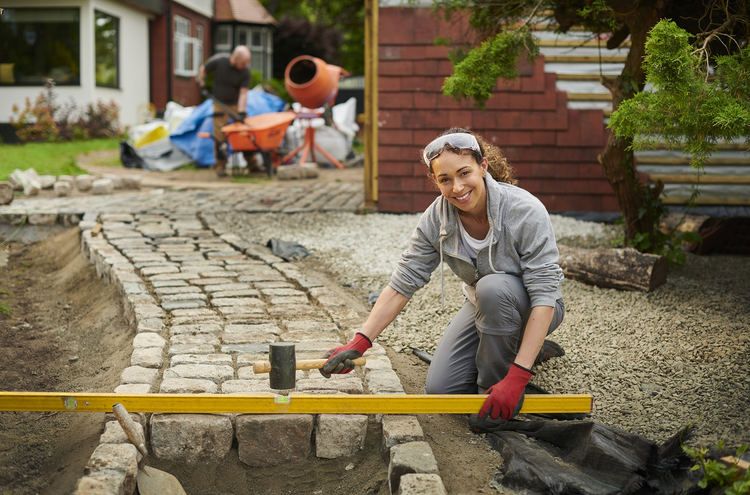A guide to pricing your landscaping service
No matter where your professional landscaping business is located, there are a lot of potential environments for a landscaping business to bloom. But the key to success lies in determining landscaping prices that match the value of your services and the landscape of your business community.
Do you have questions about landscape pricing and how to set your prices? Keep reading for five steps you can take to set professional landscaper prices that work for you and your clients.
Step 1: Figure out your overhead costs
Before you start setting your specific professional landscaping prices, it’s imperative that you figure out the total amount of your overhead costs. These are expenses that are associated with running a yard landscaping business. Your overhead costs include things like:
- Monthly rent or mortgage payment
- Salaries
- Cost of landscaping project equipment
- Business utilities like Internet, electricity, heat, etc.
- Transportation expenses like gas, vehicles, and vehicle maintenance
Determining your overhead costs is crucial because it lets you know how much you need to charge for your landscaping services in order to cover the costs associated with those services, plus a portion of your costs of doing business. But how do business owners arrive at an appropriate figure?
One way is to divide your annual overhead costs by the total number of hours you and your crews spend working on jobs. The result is the amount of money you should add to the direct costs of each landscape design job, usually in the form of labor, to account for your overhead expenses.
For example, suppose that last year you spent $250,000 in overhead costs for your landscaping services. Suppose also that you employed three landscapers who each worked about 2,000 hours for a combined 6,000 hours. Using those numbers, you can calculate the share of overhead expenses covered by each individual job:
250,000 (total overhead costs) / 6,000 (total labor hours) = approximately 41.
So, tacking $41 for labor onto each job accounts for your overhead expenses.
Step 2: Estimate your direct costs
While your overhead expenses reflect what it costs you to stay in business, direct costs are associated with the amount of money you’ll spend on an individual landscaping project. When it comes to landscape pricing, direct costs include things like
- Plants and plant material
- Soil
- Mulch
- Fertilizers
- Pavers (for paved patios)
- Lawn fixtures
Direct costs will vary depending on the demands of each yard landscaping job. That said, you can easily estimate these expenses based on the cost of your most common services and materials.
For example, knowing how many pounds of planting mulch you need to cover 25 square feet of space plus the landscaping cost of the mulch allows you to estimate your costs fairly accurately. In turn, this makes it easier to scale up or down depending on the size of a given landscape design project.
Step 3: Consider job-specific factors
Part of what makes landscaping such a unique and exciting business is how much one landscaping job can vary from the next. Various factors, from yard or lawn size to the type of landscaping requested, fill each day with surprises. Anticipating those challenges won’t take any of the excitement out of the job, but it can help you hammer out your prices.
That means taking the characteristics of individual properties under consideration when figuring out your pricing. The most influential factors to consider are:
- Property size – Taking accurate lawn measurements of the outdoor space is the best way to estimate the direct costs of a job. Among other things, it clues you into how long a job will take and how much you’ll spend on materials and supplies.
- Property characteristics – Accounting for features unique to any given patio, yard, or outdoor living space can help you avoid losing money and time to unexpectedly complex projects. Things like trees, fencing, patios, pools, and other structures, plus paths and sidewalks, can all complicate a yard landscaping job and should factor into your pricing.
- Property condition – As a landscaper, you may be thrilled by the challenge of an untended yard that’s been left to grow wild. Even so, you should keep in mind that a lot of extra clean-up can add to labor hours. Be sure to take that into consideration when quoting a landscape design plan.
Step 4: Check competitor rates
Take a look at the average rates for services in your area. This strategy allows you to get a sense of how to set your prices so that they match up with current rates, helping your business remain profitable. Additionally, setting appropriate rates can signal to homeowners that your business is legitimate and trustworthy.
As such, you should be aware of the national averages and the local rates where you live.
National averages
The national average rates for lawn care services are a good place to start because they can cue you into important information like the costs of materials and how much you should pay your employed landscapers.
Currently, national rates average between $214 and $300 per job. That estimate includes some of the most standard front and backyard landscaping services, like:
- Lawn mowing
- Weeding
- Trimming
- General maintenance & yard cleanup
Generally, things like tree removal, lawn fertilization, and weed control are considered non-standard landscaping services that can bump up your direct costs. As such, they can be a reason to increase your landscape designer charges.
Local rates
Even more important than knowing the national average of lawn care is knowing how much landscaping companies are charging where you live. This helps you:
- Anticipate the expectations of consumers in your neighborhood
- Set your own prices at points that keep you competitive with local businesses
You can check business websites for rate information in your town or city.
Step 5: Assess your business goals
Now that you’ve factored those things in, there’s one final aspect you should consider: your landscaping company's goals.
Your prices aren’t arbitrary. That means you should set them intentionally, with an eye on where you want to take your business. Your pricing plan should promote a specific objective, such as:
- Boosting profits – If your goal as a landscape designer is to boost your revenue, you’ll want to build that into your pricing. This could mean charging higher rates for labor or offering more expensive services, like aeration or weed control.
- Boosting customer base – Perhaps your goal is to win over as many customers as you can. Offering slightly lower-than-average prices can make your business more desirable, which may, in turn, boost your long-term revenue.
- Steady business – Keeping your prices in line with national and local averages can promote a healthy, regular stream of business. For businesses that want the security of reliable business powered by returning customers, this is often the route to take in terms of pricing.
Why pricing is so important
Pricing your landscape maintenance services is among the most important decisions you’ll make as a business owner. Setting your prices correctly means you’ll stand a better chance of attracting new customers, retaining old ones, and booking jobs that boost your profit margin instead of draining your resources.
How you price your services can affect many crucial aspects of your business, including:
- Your profit margin – Pricing your services at a rate that covers your costs and is commensurate with market rates and consumer expectations can help keep your business profitable. Setting your prices neither too high nor too low can ensure that you turn a profit on each landscaping project without losing customers who think your services are too expensive.
- Your market viability – After the quality of your service, your pricing is likely one of the most important factors consumers will consider. Being diligent about your pricing can help make you a competitive player among businesses where you live.
- Your branding – Some consumers may interpret your price points as indicators of your business positioning. Higher prices might be associated with improved service quality, for example. On the other hand, moderate or lower prices might suggest that your business prizes customer satisfaction over profits, which may also be appealing.
Stand out in your neighborhood with Nextdoor
Some things never change: from cutting grass as a child to opening your own lawn care company, you’ve always been in the business of helping your neighbors craft their yards into beautiful landscapes.
But what has changed is where and how you meet your neighbors.
Welcome to Nextdoor.
Nextdoor is an online platform where community members make real-life connections with businesses and service providers in their neighborhoods. A trusted source of business recommendations, community updates, and more, in nearly one-third of U.S. households, listing your business on Nextdoor is the only way to instantly connect with the customers that matter most: your neighbors.
Your neighbors are waiting. List your business today.
Sources:
Green Industry Pros. How to Set Your Pricing in Lawn and Landscaping. https://www.greenindustrypros.com/business-management/job-costing-estimating/article/22017836/how-to-set-your-pricing-in-lawn-and-landscaping
Investopedia. How to Set Lawn Care Pricing & Quotes. https://insights.workwave.com/industry/lawn-landscape/lawn-care-pricing-estimates-guide/
My Marketing Dept. Small Business Pricing Objectives. https://www.mymarketingdept.com/small-business-pricing-objectives/








